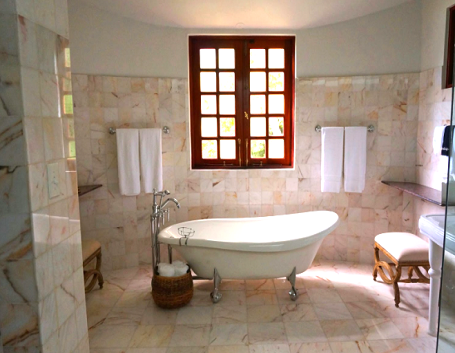Ice Bath Essentials: What You Need to Get Started with Cold Therapy at Home
 Cold therapy has been around for centuries, with ice baths gaining mainstream attention as people look for ways to improve their health and recovery. This method isn’t just for athletes—it’s for anyone looking to reduce inflammation, improve circulation, and boost mental resilience. The benefits extend beyond muscle recovery, making ice baths an appealing wellness practice for those seeking clarity and stress relief.This guide covers everything needed to get started with cold therapy, including how to prepare for and recover from an ice bath to make the experience both effective and enjoyable.
Cold therapy has been around for centuries, with ice baths gaining mainstream attention as people look for ways to improve their health and recovery. This method isn’t just for athletes—it’s for anyone looking to reduce inflammation, improve circulation, and boost mental resilience. The benefits extend beyond muscle recovery, making ice baths an appealing wellness practice for those seeking clarity and stress relief.This guide covers everything needed to get started with cold therapy, including how to prepare for and recover from an ice bath to make the experience both effective and enjoyable.
Setting Up Your Ice Bath Space
Creating an ice bath space requires more than just adding ice to water. A well-planned setup ensures safety, comfort, and effectiveness, allowing the body to adapt gradually. The tub’s size and location influence the overall experience, with proper drainage and temperature control being essential. Reliable monitoring tools help maintain a consistent cold environment. Many embrace this practice, strengthening mental resilience while adjusting to the shock of cold exposure. Below are key factors for setting up an effective ice bath at home.
Choosing the Right Tub or Container
* Bathtub – A standard bathtub is a convenient option if it’s large enough for full-body submersion.
* Stock Tank – Many prefer these for their durability and spacious design.
* Specialized Ice Bath Tubs – These are designed to maintain cold temperatures longer, making them ideal for frequent users.
Finding the Ideal Location
* An outdoor space works well for those who want a refreshing experience in nature.
* An indoor setup requires proper drainage and ventilation.
* Keeping the tub in a shaded or cool area helps maintain low water temperatures.
Water Temperature and Ice Requirements
* The optimal range for ice baths is between 50°F and 59°F.
* Use a thermometer to track the temperature before entering.
* Consider using Warrior Willpower water chillers to keep your water at the desired temperature.
* Around 40–60 lbs of ice is typically needed to lower the water temperature effectively.
Essential Equipment and Accessories
An ice bath setup isn’t complete without a few essential tools that make the process safer and more efficient. From monitoring water temperature to ensuring comfort during immersion, the right equipment enhances the experience. While cold therapy builds mental strength, small adjustments can help manage the initial shock and make the practice more sustainable. Here’s what to have on hand for an optimal ice bath session.
Thermometer
* A digital or infrared thermometer ensures the water stays within the safe range.
* Tracking temperature allows for gradual adjustments as the body adapts.
Timer
* Staying submerged for the right amount of time prevents overexposure.
* Beginners should start with one to three minutes, gradually increasing as tolerance improves.
Insulation and Covers
* Covers help retain cold temperatures, reducing the need for frequent ice refills.
* A well-insulated tub minimizes fluctuations in water temperature.
Comfort and Safety Items
* Neoprene socks and gloves reduce the shock to extremities.
* Head coverings help prevent excessive heat loss.
* A dry towel nearby allows for quick drying after exiting the bath.
Pre- and Post-Ice Bath Practices
Proper preparation and recovery make ice baths more effective and manageable. Warming up with movement and controlled breathing helps the body adjust before immersion. Once inside, steady breathing reduces shock. After exiting, gradual rewarming through movement, hydration, and stretching supports circulation and prevents stiffness for a smoother recovery.
How to Prepare Your Body
Breathing exercises like the Wim Hof method help regulate stress response.
A light warm-up (jumping jacks or mobility exercises) helps prevent excessive shock.
Gradual exposure by splashing cold water on the body first makes entry easier.
What to Do After an Ice Bath
* Move around to stimulate circulation and naturally rewarm the body.
* Drink warm fluids to support hydration and restore balance.
* Stretching and mobility work help relax muscles and maintain flexibility.
Frequency and Duration Guidelines
* Beginners should start with one to three minutes per session.
* More experienced users can extend to five to ten minutes at controlled temperatures.
* Two to four ice baths per week offer noticeable benefits without excessive strain.
Conclusion
Building a home ice bath setup requires thoughtful preparation, but the benefits make it worthwhile. The right tub, reliable temperature control, and essential accessories help create a safe and effective space for cold therapy. Adjusting to ice baths takes time, but gradual exposure helps the body and mind adapt.